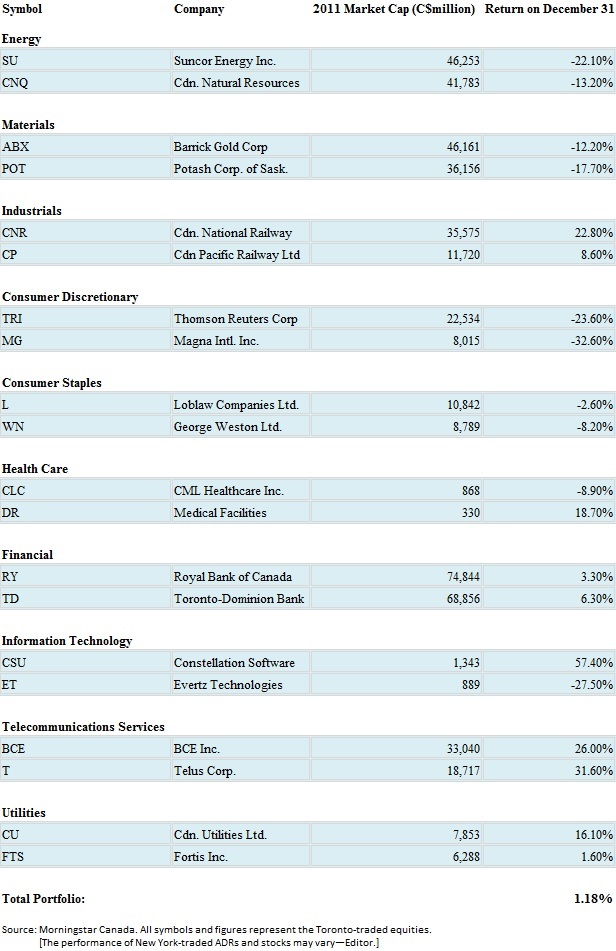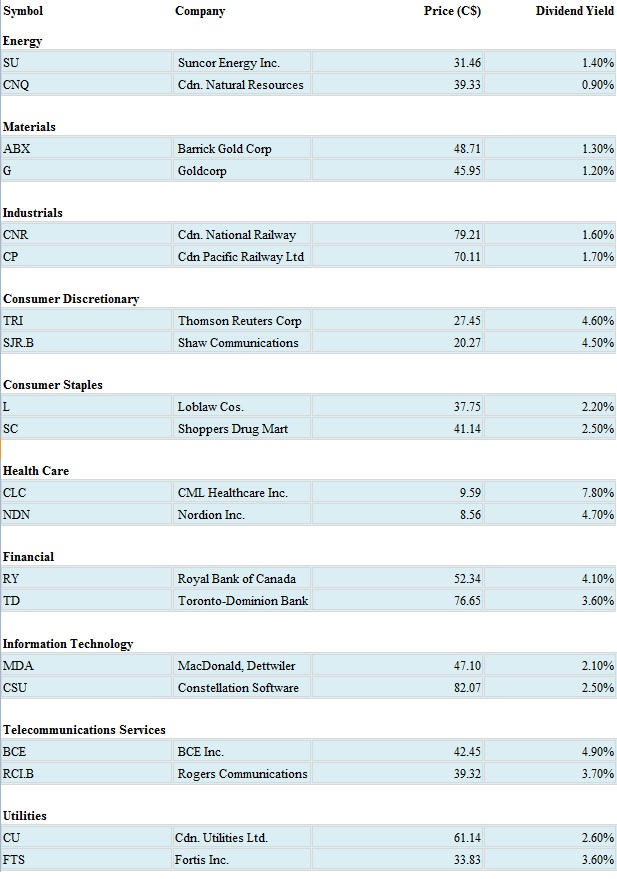Data shows this conservative stock group has an annualized return of 9.8%...that's better than the TSX Composite index, writes Rob Carrick, reporter and columnist for The Globe and Mail.
Roller coasters belong in amusement parks, not your investment portfolio.
If you agree, have a look at the latest results from the Two-Minute Portfolio, an ongoing experiment in quick, super-simple stock picking for conservative investors. If you combine both share price changes and dividends into a total return, the S&P/TSX composite index fell 8.7% last year and the Two-Minute Portfolio gained 1.2%.
Years like 2011 define the Two-Minute Portfolio. Data going back 26 years show it has a consistent pattern of far outperforming the index in bad years and not rising as much in great years. What you're left with is an annualized total return of 9.8% for the Two-Minute Portfolio, compared to 8.3% for the index.
That's a pretty fair result from an investing strategy requiring just a few minutes of work every year. You start by investing equal amounts in the largest two dividend-paying stocks in each of the ten sectors of the Canadian stock market, as measured by market capitalization. That's share price multiplied by the number of shares outstanding.
Then, at the beginning of each subsequent year, you adjust the portfolio to ensure you're holding the latest market cap leaders in more or less equal proportion. You'll incur some brokerage commissions to set up and maintain the Two-Minute Portfolio, but they will ideally take no more than a small bite out of your returns.
The Two-Minute Portfolio was introduced back in 1999, but data going back to 1986 have been compiled by CPMS, a division of Morningstar Canada that provides North American equity research and portfolio analysis. Special thanks to Craig McGee at CPMS.
In these uncertain times, one of the most appealing things about the two-minute strategy is that it's based on familiar blue-chip dividend stocks such as Royal Bank of Canada (RY), Suncor Energy (SU), Canadian National Railway (Toronto: CNR), Shoppers Drug Mart (Toronto: SC), and BCE (BCE).
The Canadian stock market is light on health care and tech dividend stocks, so smaller companies like CML Healthcare (Toronto: CLC) and MacDonald Dettwiler (Toronto: MDA) are also included. The dividend yield on the portfolio in 2011 was 3.6%, and the expected yield for 2012 is 3.1%.
Broad diversification is another portfolio benefit. All sectors are limited to 10% of the whole, whereas the S&P/TSX composite index is overwhelmingly skewed to a few sectors. Financial stocks have a weighting of just over 29% in the index, energy stocks are around 27%, and materials stocks are around 21.5%.
Heavy weightings in energy and materials accentuate the volatility of the composite index. By limiting exposure to these sectors, the Two-Minute Portfolio offers less intense peaks and valleys.
It also gives the less dominant sectors of the index an opportunity to shine. In fact, there are five TSX sectors that have weightings of 4% or less, and another two are between 5% and 6%. Lots of good stocks live in these sectors, and the Two-Minute Portfolio lets you benefit when they prosper.
Consider telecommunications, the top-performing sector in the index last year. Telecom stocks take up just 5% of the index, half the weighting they have in the Two-Minute Portfolio through exposure to BCE, up 26% last year, and Telus (Toronto: T), up 31.6%.
While the two-minute strategy offers a gentler ride than the index, it's not without its little dramas. For example, the portfolio underperformed the index in five of six years between 2004 and 2009. Clearly, it's not a great way to exploit a surging stock market.
The two-minute strategy can also deliver sharp losses, even if it lost money only three times in the past 26 years (compared to eight for the index). The worst calendar-year loss for the portfolio was 19.1% in 2008, while the worst decline over any timeframe was the 30.5% plunge from October, 2007 through February, 2009.
Mind you, a plunge in the Two-Minute Portfolio suggests something worse for the index. It fell 33% in 2008, and its worst drop dating back to 1986 was a 43.4% nosedive that began in May, 2008 and ended in February, 2009.
Another way to assess the Two-Minute Portfolio's stability in comparison to the broader market is to use a volatility measure called beta. The S&P/TSX composite index has a beta of 1.0, while the Two-Minute Portfolio comes in at a very low 0.71. Only three widely available Canadian equity funds had a beta lower than that over the past year.
Two thoughts on using the Two-Minute Portfolio in real life. First, it's not an entire investing plan unto itself. Stay diversified with bonds and stocks from other parts of the world.
Second, don't consider using the two-minute approach without first checking into the cost of brokerage commissions to set it up and maintain it. As a general rule, the two-minute approach makes sense if you can keep your brokerage costs down to 0.5% or less of your investment per year.
At many online brokers, a $50,000 minimum investment makes sense because that's the threshold where clients qualify for $10 trades (smaller accounts pay $29 in most cases). The two-minute strategy can make sense for smaller portfolios at low-cost brokers Virtual Brokers and Questrade.
[Also note that US-based investors will be liable for different fees than Canadian investors. If you live outside Canada, it would be wise to speak to a professional before following this strategy—Editor.]
Up Next Yearly maintenance for the Two-Minute Portfolio...
|pagebreak|Yearly maintenance for the Two-Minute Portfolio consists of selling stocks that are no longer market cap leaders in their sector and buying replacements. The total number of buys and sells required to adjust market cap leaders has ranged from as little as zero to as many as 14.
Additional trades will be required to rebalance the holdover stocks in the portfolio to ensure they stay roughly within their target 5% weighting.
Tame stuff, sure. If you want excitement, head to an amusement park.
The Two-Minute Portfolio, Then And Now
Here's the 2011 version of the portfolio, which is built on the two largest stocks by market capitalization in each of the ten TSX sectors.

And here's the 2012 version of the portfolio:



















